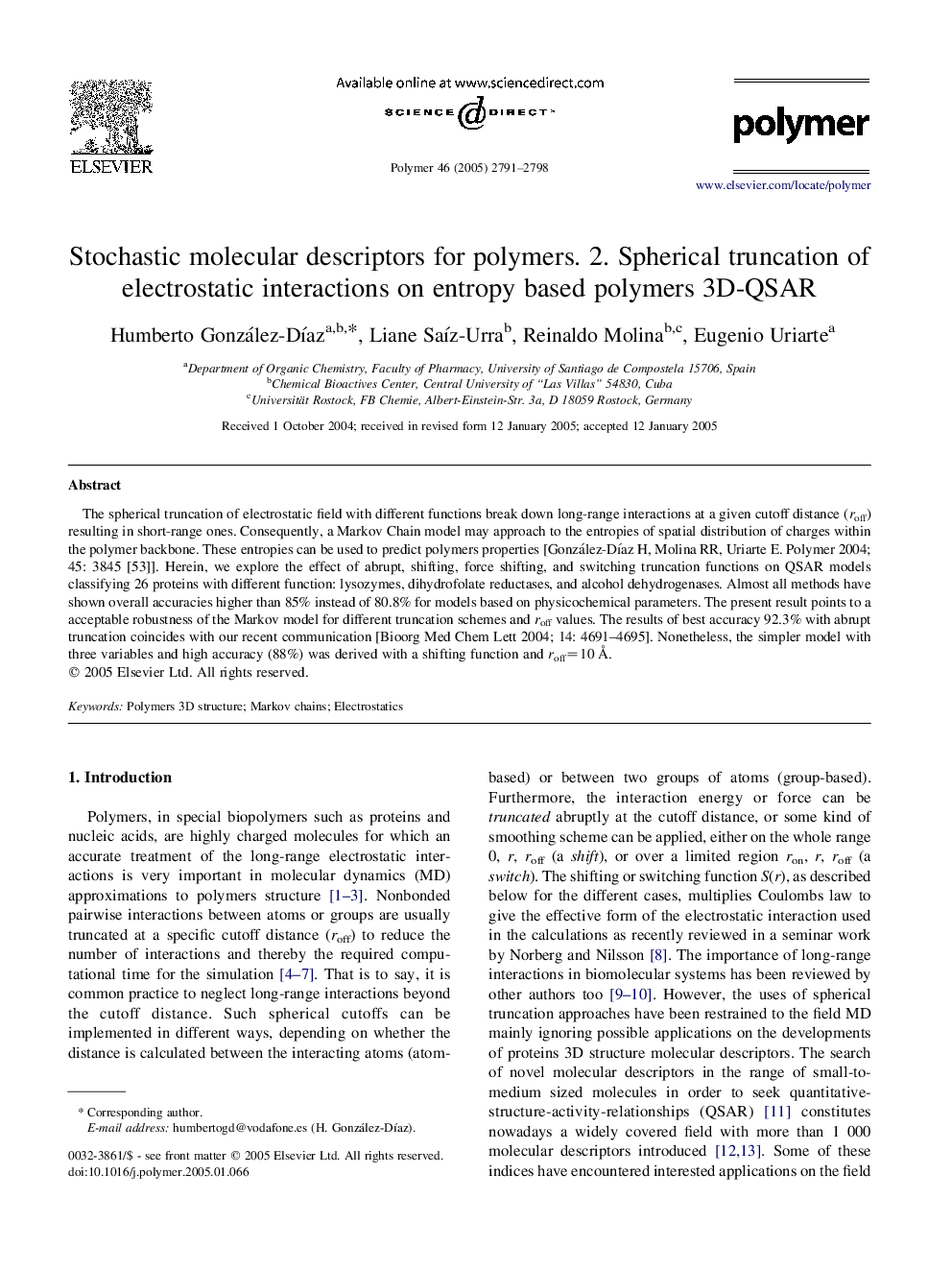| Article ID | Journal | Published Year | Pages | File Type |
|---|---|---|---|---|
| 5191709 | Polymer | 2005 | 8 Pages |
Abstract
The spherical truncation of electrostatic field with different functions break down long-range interactions at a given cutoff distance (roff) resulting in short-range ones. Consequently, a Markov Chain model may approach to the entropies of spatial distribution of charges within the polymer backbone. These entropies can be used to predict polymers properties [González-DÃaz H, Molina RR, Uriarte E. Polymer 2004; 45: 3845 [53]]. Herein, we explore the effect of abrupt, shifting, force shifting, and switching truncation functions on QSAR models classifying 26 proteins with different function: lysozymes, dihydrofolate reductases, and alcohol dehydrogenases. Almost all methods have shown overall accuracies higher than 85% instead of 80.8% for models based on physicochemical parameters. The present result points to a acceptable robustness of the Markov model for different truncation schemes and roff values. The results of best accuracy 92.3% with abrupt truncation coincides with our recent communication [Bioorg Med Chem Lett 2004; 14: 4691-4695]. Nonetheless, the simpler model with three variables and high accuracy (88%) was derived with a shifting function and roff=10Â Ã
.
Keywords
Related Topics
Physical Sciences and Engineering
Chemistry
Organic Chemistry
Authors
Humberto González-DÃaz, Liane SaÃz-Urra, Reinaldo Molina, Eugenio Uriarte,
